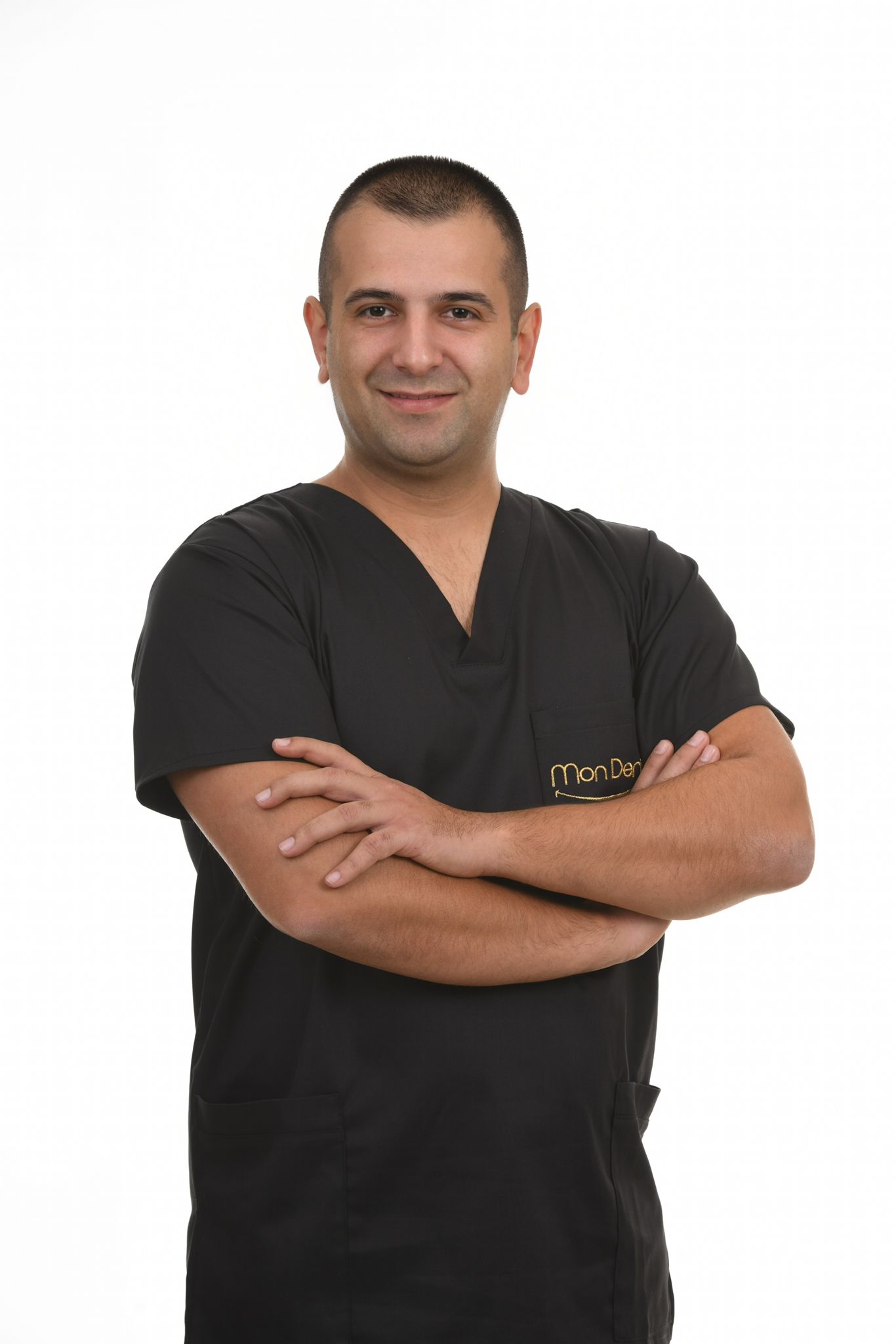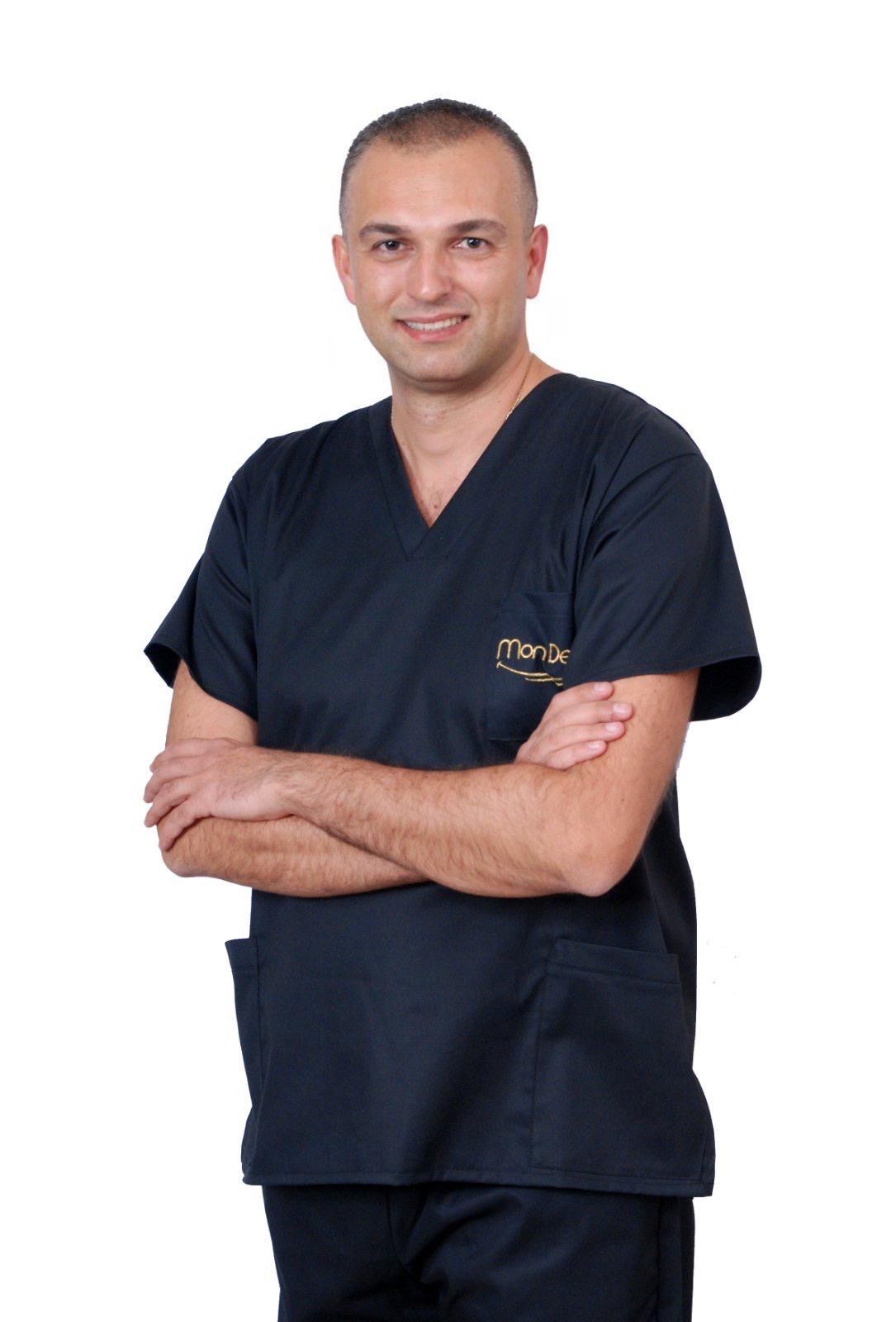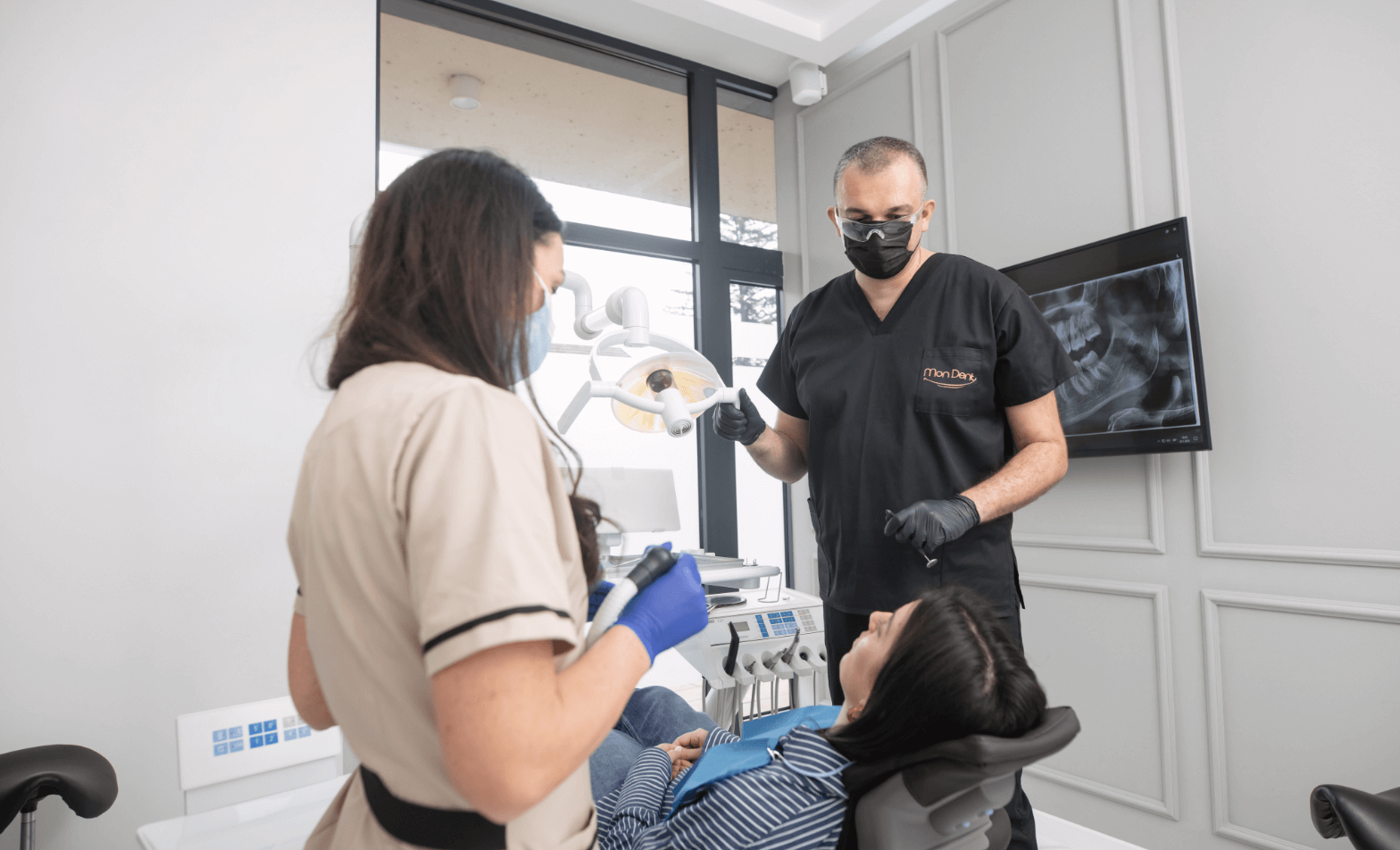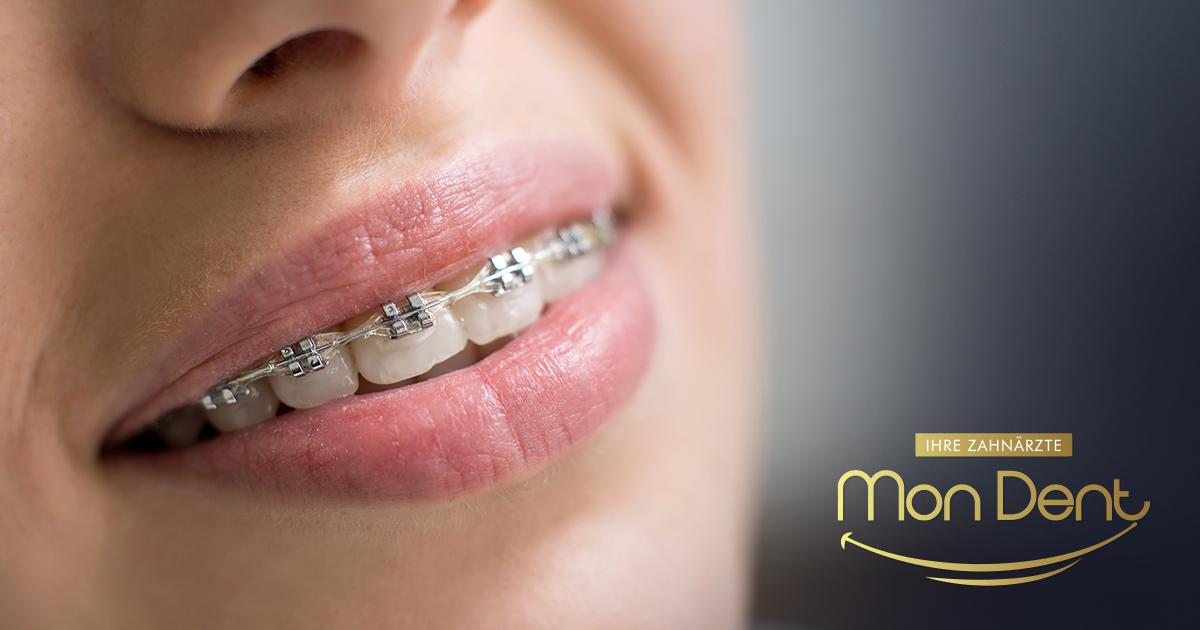Content:
- What is a fixed prosthesis and the installation process?
- Advantages of fixed dentures
- Fixed denture nutrition
- How long does teeth straightening treatment last?
- Fixed denture price for teeth in BiH
A fixed prosthesis is a type of orthodontic appliance that is permanently placed on the teeth and uses brackets (metal or ceramic) and wire to gently move the teeth into the correct position. Orthodontics is the branch of dentistry that deals with straightening the jaws and teeth. So, when an orthodontist (an orthodontic specialist) recommends treatment with fixed braces, this means that each of your teeth will have a “braces” glued to it, and a wire will be passed between the braces, through which forces are transmitted to the teeth in a controlled manner.
Fixed dentures start working immediately – by applying continuous and gentle pressure on your teeth, they move them into the desired position. This ultimately results in straight and regular teeth, which not only looks good, but also improves your oral health.
At MonDent Dental Clinic, before we make the decision to place fixed dentures on you, we first thoroughly examine the current condition of your teeth, discuss your plans and options with you, and together we make the final and right decision.
What is a fixed prosthesis and what does the installation process look like?
A fixed prosthesis (or dental braces) consists of several key elements: lock, tubes or metal rings, as well as orthodontic wires (arches) which connects it all. The braces are bonded directly to the surface of the teeth, while the wire creates controlled pressure that moves the teeth into the desired position.
There are different types of locks:
Metal locks
Traditional and most commonly used.
Aesthetic braces
Made of transparent or sapphire materials, almost invisible.
Self-ligating brackets
They have a special mechanism for attaching the wire without additional rubber bands.
Your orthodontist will choose the type of braces based on your orthodontic needs, as well as your aesthetic requirements. Regardless of the type, all braces work on the same principle – gradual movement of teeth through precisely controlled force.
Preparation and placement of a fixed prosthesis – what does the process look like?
Before a fixed prosthesis is placed, a complete diagnostic examination is required. This usually includes:
- Clinical examination
- X-rays – orthopantomogram, tele-X-ray, and if necessary, 3D imaging
- Taking dental impressions – for making a precise model of the jaws
Based on the collected findings, the orthodontist creates a detailed therapy planIf they are present problems such as cavities or deposits, they need to be remedied before starting therapy – which means dental treatment and tartar removalOnly when the teeth are completely healthy and clean do we proceed to the placement of the prosthesis.
Same process bonding of locks It takes about ten minutes per jaw and is completely painless. After the braces are fixed, a thin orthodontic wire is threaded through them, which gradually and gently moves the teeth. At the beginning, the thinnest wire is used precisely to avoid discomfort.
During therapy, the orthodontist will periodically change the wires and, if necessary, include accessories such as elastics, mini-implants, or other elements - all with the aim of moving the teeth into the ideal position as efficiently as possible.
Advantages of fixed dentures
Fixed braces are the most effective way to straighten teeth because they work from day one and allow for controlled tooth movement with minimal discomfort. In addition to improving the aesthetics of your smile, orthodontic therapy brings numerous other benefits, such as greater self-confidence and better hygiene because straight teeth are much easier to clean.
You get all these benefits because fixed dentures, with continuous pressure on the teeth, allow for their more regular arrangement. Orthodontic therapy Therefore, it brings both functional and aesthetic changes, and since the appliance is stable and cannot be removed during the day (as is the case with mobile braces), tooth movement is predictable and efficient.
Nutrition while wearing a fixed prosthesis
What can you eat while wearing a fixed prosthesis?
In the period immediately after fixed dentures are fitted, it is important to choose foods that will not damage the brackets or wire. The mouth is more sensitive at this time, and the teeth may be slightly sore, so it is best to consume soft, easy-to-chew foods. Foods such as mashed potatoes and vegetables, warm soups, yogurt, soft cheese, boiled eggs, pasta and fish without bones are safe choices. Soft fruits, such as bananas, and soft bread without a hard crust are also recommended.
This type of diet allows your teeth and fixed dentures to slowly adjust to the new situation without additional strain. Although it may seem restrictive at first, you will get used to it after a few days, and with a little attention and creativity, you will easily find meals that are both tasty and safe for wearing braces.
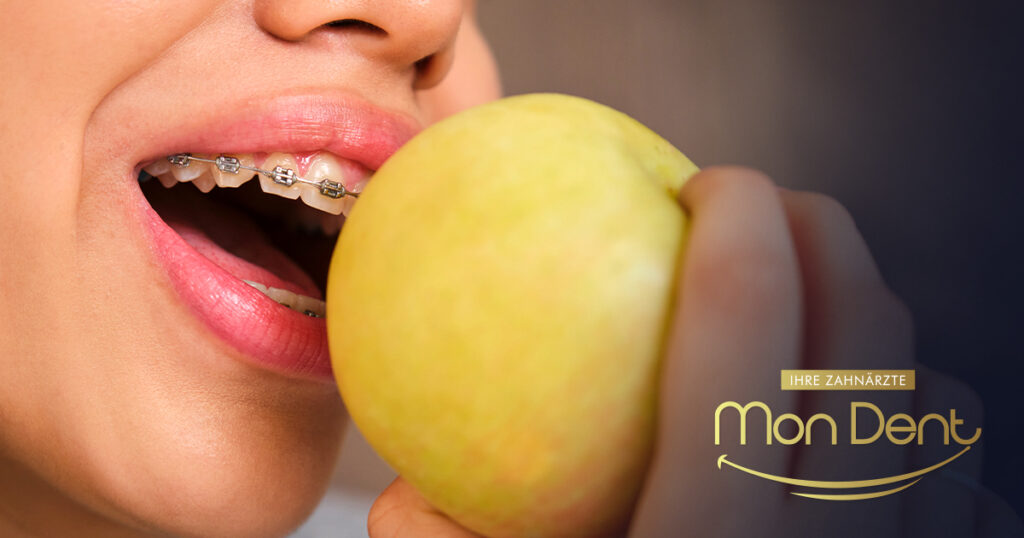
What should you not eat during orthodontic treatment?
While wearing fixed braces, it is important to avoid certain foods that can cause the appliance to malfunction and slow down the progress of therapy. Hard and sticky foods, such as caramel, hard candies, chewing gum, and nuts, can easily break the brackets or bend the wire. Even raw fruits like apples or pears can be problematic if eaten whole, so it is better to cut them into smaller pieces first.
Also, crispy pastries, chips, and hard bread should be consumed with caution – if you can't avoid them, eat them only with your back teeth and in smaller bites. At first, these changes will require extra attention, but they quickly become part of your routine. By taking a careful approach to your diet, you preserve both your braces and the progress you make in your therapy, which means you are one step closer to your desired smile.
How long does the treatment last?
The duration of treatment with a fixed prosthesis varies, but on average it is most often from one to three yearsThe length of therapy depends on several factors: the degree and type of irregularity, the patient's age, how regularly you attend check-ups and follow the orthodontist's recommendations.
Also, if you break your braces frequently or lose your braces, your treatment will be extended by several weeks each time. That's why it's important to follow the instructions carefully, have regular check-ups (usually every 4–6 weeks), and contact your dentist immediately if your braces are damaged.
Once satisfactory tooth movement has been achieved, the fixed prosthesis is removed. However, the therapy is not completely over – it follows retention phaseThis means you will wear fixed or removable retainer to prevent the teeth from moving back into their original position. During this phase, you continue to brush your teeth regularly and follow oral hygiene advice, ensuring that your new smile remains beautiful and healthy.
Remark: Our advice is to wear a removable retainer regularly because if you use this appliance irregularly, there is a high possibility that all the previous years of using a fixed prosthesis will be in vain.
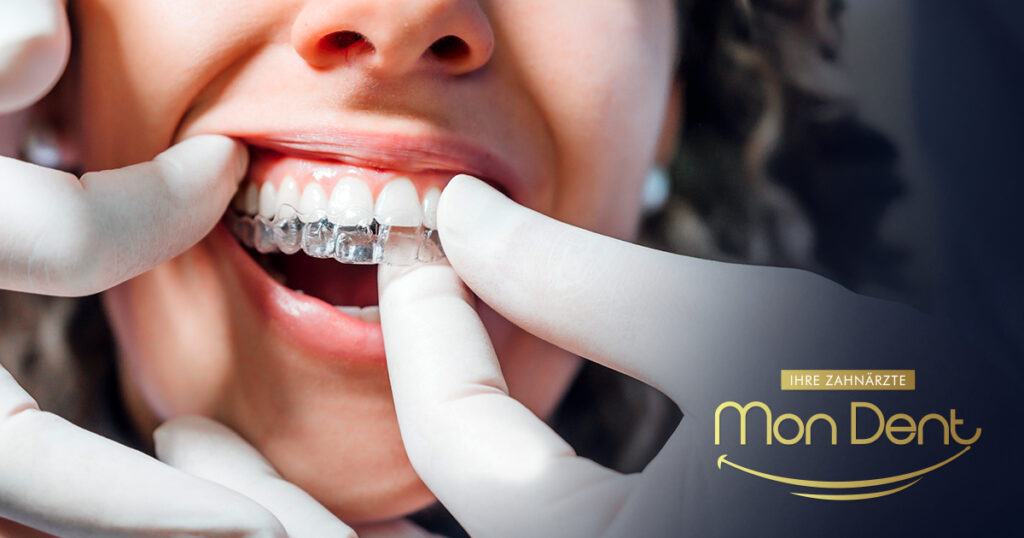
Fixed denture price in BiH
The price of orthodontic treatment with fixed braces varies depending on the type of braces and the number of teeth that need to be straightened. On the Bosnian market, prices for fixed braces are usually quoted per jaw and range from approximately 1,500 KM to 3,000 KM per fork.
At our MonDent practice, prices are transparent: for example, a standard fixed denture with metal brackets costs around 1.300 KM per jaw, while aesthetic variants with sapphire or self-ligating brackets are more expensive – from 1,600 to 2,000 KM per jaw.
The exact price depends on the chosen system (metal or clear braces) and the number of teeth to be corrected. In our office, the price usually includes the initial orthodontic examination, the manufacture of the braces, their placement, all checks during the course of the therapy, and the removal of the braces.
IMPORTANT: On our price list You can see all prices of orthodontic services in detail.
Taking care of oral health during therapy
Use an orthodontic brush (or a brush head adapted for fixed appliances), as well as an interdental brush or dental floss, to thoroughly clean the spaces between your teeth and around your braces.
Teeth cleaning With braces, it can seem challenging, but with the “center and edges” technique – which your dentist will show you – it becomes easier and part of your daily routine. Removing plaque prevents tartar and cavities from forming under your braces, keeping your enamel and gums healthy throughout your treatment.
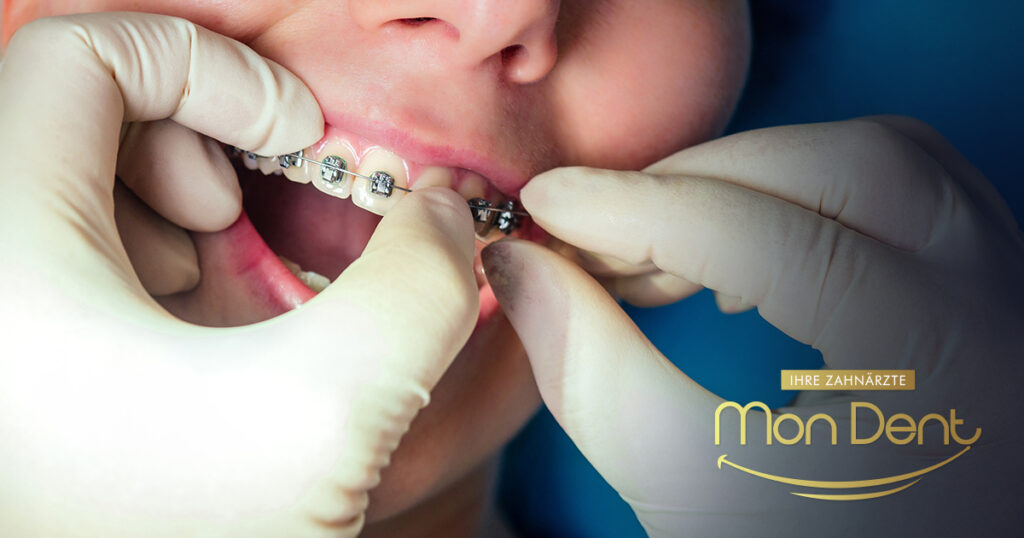
In addition to daily care, it is also recommended professional teeth cleaning at the dentist every six months. By removing plaque that is difficult to clean at home, the development of periodontal problems is prevented, and teeth remain smooth, clean and more resistant to new plaque buildup.
Regular check-ups at the dentist
Regular check-ups with your orthodontist – usually every 4 to 6 weeks – are essential for successful treatment. During the check-ups, your orthodontist adjusts your braces and monitors your progress. If a bracket breaks or a wire becomes loose, it is important to contact your dentist immediately. Any delay in treatment can extend your treatment by an additional 4–6 weeks, as it often requires repositioning of the braces.
Conclusion
Fixed dentures are a reliable and effective method for correcting misaligned teeth and creating a straight smile. To achieve the best results, it is important to follow the advice on nutrition and hygiene, and to visit your orthodontist regularly. You can read more information about orthodontic treatments on our Orthodontics page.
If you have any additional questions or would like to start therapy, feel free to contact us and make an appointment.You can quickly book your appointment on the Make an Appointment page. Our experts will explain all stages of treatment in detail and help you find the optimal solution for your smile.

